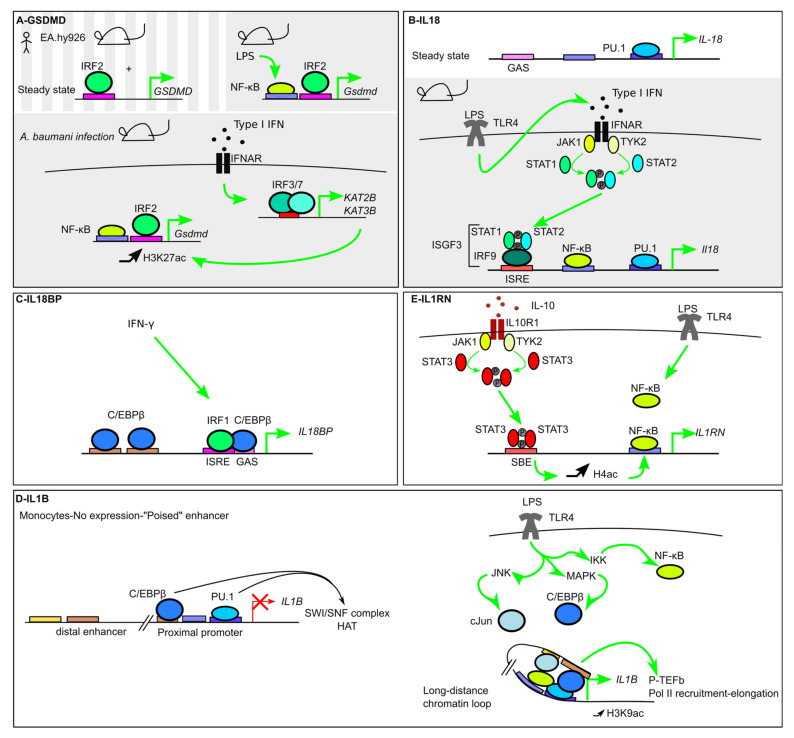Figure 4.
Transcriptional regulation of inflammasome substrates. (A) In mice and in the human endothelial EA.hy926 cell line, GSDMD constitutive expression is controlled by IRF2. During infection, NF-κB increases Gsdmd expression. Furthermore, induction of the histone acetyl transferases KAT2B and KAT3B, in an Interferon-α/β Receptor-(IFNAR)/IRF3/7-dependent manner, correlates with an increase in H3K27ac epigenetic mark at the Gsdmd promoter and an increase in its transcription level. (B) IL18 is expressed at steady state and its promoter demonstrates PU.1 binding. LPS treatment leads to activation of STAT1 and STAT2 downstream of IFNAR, to the formation of the IFN-stimulated gene factor 3 (ISGF3) complex, containing IRF9, Phospho-STAT1, and Phospho-STAT2, and its binding to the Il18 promoter. (C) IL18BP is induced by IFN-γ. IRF1 binds C/EBPβ to promote its recruitment to a Gamma-activated site (GAS) site. (D) IL1b is not expressed at steady state although PU.1 and C/EBPβ cooperate in monocytes to recruit the Switch/sucrose nonfermenting (SWI/SNF) complex and Histone acetyl transferase (HAT) to render the enhancer in a “poised” state. LPS treatment triggers C/EBPβ and c-Jun recruitment at the distal enhancer and the formation of a long-distance loop allowing the TFs to cooperate to increase H3K9ac, recruit positive transcription elongation factor b (p-TEFb) and activate Pol II. (E) IL-10 induces IL1RN expression in a STAT3-dependent manner. STAT3 binding to STAT-Binding Element (SBE) increases Histone H4 acetylation and promotes NF-κB binding.

